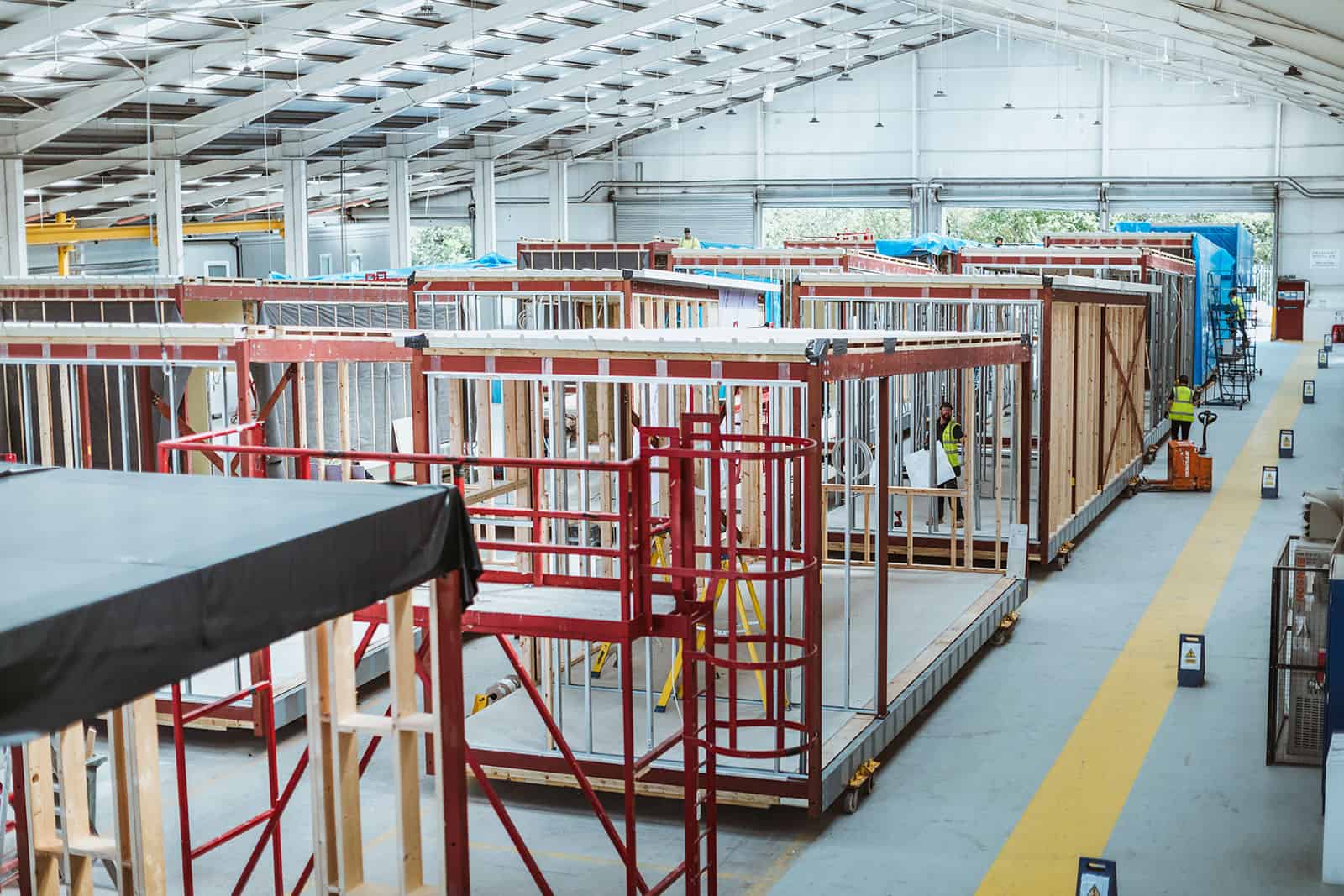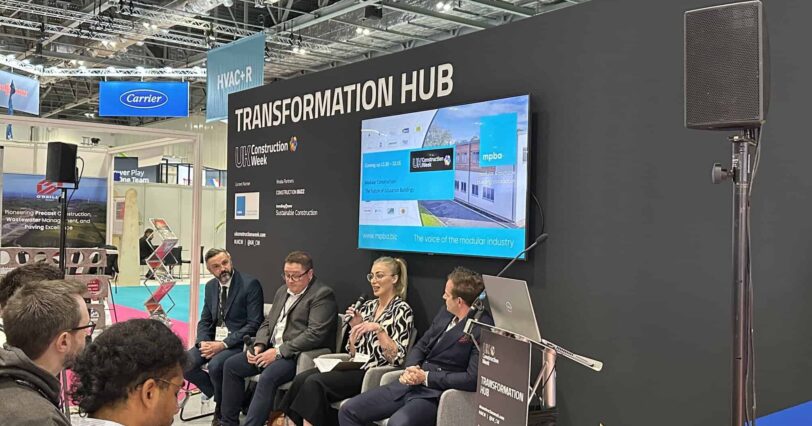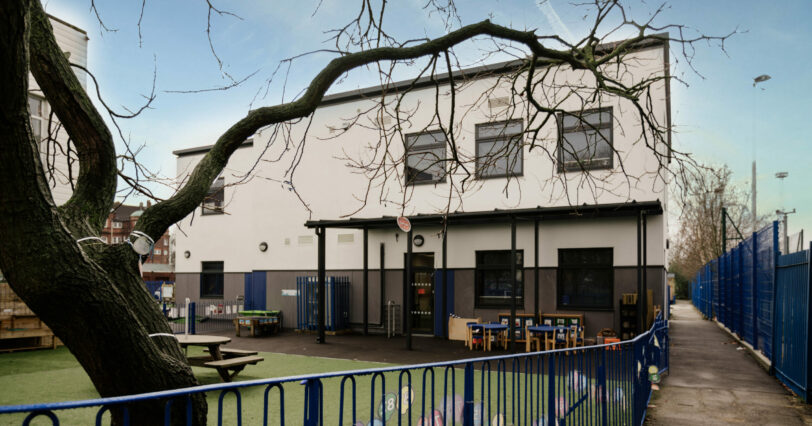With the global climate crisis widely recognised as an emergency, now’s the time for the construction industry to act to support net zero targets.
Below, we explore why it’s important for those building today to consider the impact on ‘tomorrow’, so we can unlock sustainability challenges across the building sector.
Record temperatures
The UK reached record-breaking temperatures in summer 2022, recording a staggering 40.3°C in Lincolnshire on 18 July 2022. This demonstrates the effects of the climate crisis, highlighting the importance of taking action – and taking action now.
Rising temperatures arise as a direct impact of the amount of carbon released into the atmosphere, as a result of our day-to-day lives. If nothing changes, this summer won’t be the last time we’ll see extreme weather conditions, as experts predict heatwaves like this will become more frequent, intense and prolonged.
As the unprecedented UK heatwave brings global warming to the top of our minds, many have started to consider – what can we do to help?
The UK’s sustainability targets
For several years now, the UK has acknowledged the need for ensuring a more sustainable future, with the government setting out its decarbonisation pathway as part of its ‘Build Back Greener’ campaign. This includes various targets, most importantly, the aim to meet net zero by 2050.
For the building industry, these targets include an aim to reduce direct emissions from all public sector buildings by 75% by 2037, to increase the affordability of low carbon buildings for all.
However, the government was recently instructed by the High Court to support these targets with greater clarity and explanations, to support the UK in reaching its net zero future. Alongside this, the government has also stated how it will provide grants to the construction industry to support its shift to net zero. However, that change must happen sooner rather than later, to ensure that the buildings we install today are suitable for years to come.
A building problem
According to the UK Green Building Council, 40% of the UK’s total carbon footprint comes from our built environment. Although we may attribute much of this to a building’s running costs, around half of a building’s carbon footprint actually comes from its construction process, demonstrating the need to adapt practices and processes to support the industry’s net zero future.
Manufacturing new building materials creates embodied carbon, so it’s not enough for buildings to be carbon-neutral during in operation. Manufacturing processes need to change too.
Overcoming barriers
The need to think sustainably across the construction sector is widely recognised, but there are certain barriers to overcome for the sector to lead the way in achieving net zero:
- Current processes
Modernising current manufacturing processes is key to reducing their carbon footprints, faster.
Every product and process, in every aspect of the construction supply chain, needs to be carbon-rated, as ‘what gets measured, gets done’. A consistent rating system will focus minds, as demonstrated with the energy efficiency ratings for electrical appliances.
The government has pledged to do its bit to support this, with new methods to lower lifecycle emissions. However, this is extremely expensive, and suppliers need financial support from the government.
- Delaying carbon efficiency
With the date to hit net zero targets still way into the future, some believe net zero targets aren’t a priority when planning today’s buildings. However, although they may seem a long way off, we need to act now to ensure today’s buildings – which will last well past 2050 – meet the net zero targets.
Making a difference
We need to make a difference, and make it now. It’s not enough to wait for increased government support, or to step back from our responsibilities. We need to constantly challenge our carbon impact to create sustainable spaces, every time we build.
That means maximising carbon efficiency by changing the way we design buildings and the processes we use to create them. This may include incorporating low carbon design features, which improve overall insulation, absorb excess rainwater or sequester carbon dioxide, through green roofs or walls, for example.
The construction industry must acknowledge the impact of climate change, and the importance to act now. However, simply changing a building’s lifecycle alone isn’t enough – we also need to ensure the processes that underpin its manufacture are sustainable too.
Lean and green processes
It’s estimated that 400 million tonnes of materials are used by the UK construction industry every year, so it’s more important than ever to prioritise processes that minimise energy and material waste. Lean manufacturing processes dramatically reduce a building’s waste – both from construction and installation.
Offsite manufacturing radically reduces a building’s carbon footprint, compared to traditional, bricks and mortar methods, and as part of the process, it also maximises the industry’s productivity.
Lean manufacturing defines waste as anything that doesn’t ‘add value’ in the customer’s eyes, and they often don’t want to pay for it either. It’s all about examining every single process to improve the quality, efficiency and sustainability of your product. Lean is the dream solution – a way for you to meet your customer’s needs and reduce costs, all while working to net zero targets.
Offsite construction has been independently recognised by the UK Green Building Council for its pivotal role in reducing the UK development sector’s carbon footprint. It’s offering a step change to the construction industry: improved sustainability, reduced waste, tighter programmes, easier maintenance and enhanced quality control.
With streamlined and efficient processes, offsite manufacturing significantly reduces the amount of waste to landfill, and energy use is also much easier to reduce and control in the factory setting. Modular buildings are also designed to be reused and recycled at the end of their lifecycle, massively reducing the amount of energy required to construct a new building in the future.







